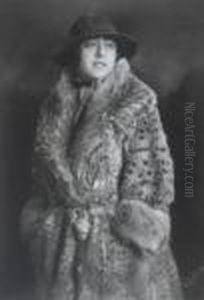Rudolph Duhrkoop Paintings
Rudolph Duhrkoop was a German photographer born on August 1, 1848, in Hamburg, Germany, and passed away on April 1, 1918. He is recognized for his significant contribution to portrait photography and early involvement in the pictorialist movement in Germany. Duhrkoop began his career in photography somewhat later in life, initially working in various jobs before discovering his passion for the camera. His work is characterized by a meticulous attention to detail, innovative use of lighting, and a deep interest in capturing the personality and essence of his subjects rather than just their likeness.
Duhrkoop's photographic journey began in earnest when he opened his first studio in Hamburg in the 1880s. Despite the competitive environment, he quickly distinguished himself with his unique style and approach to portrait photography. He was particularly adept at utilizing natural light to create atmospheric effects, which set his portraits apart from the more traditionally lit and posed photographs of that era. His clientele soon grew to include notable figures from various sectors of society, including artists, musicians, and politicians, further cementing his reputation as a leading portrait photographer of his time.
Beyond his studio work, Duhrkoop was actively involved in the broader photographic community. He participated in numerous exhibitions and was a member of several photographic societies, where he advocated for photography as an art form. This was during a period when the debate over photography's status as art or mere documentation was particularly heated. Duhrkoop's photographs, with their artistic composition and emotive quality, contributed to the argument in favor of photography's recognition as a legitimate art form.
One of Duhrkoop's notable contributions to photography was his experimentation with autochromes, an early color photography process. This allowed him to explore new dimensions in portrait and landscape photography, adding a vibrant layer to his already compelling compositions. Despite the technical challenges associated with the autochrome process, Duhrkoop's work in this medium was well-received and added to his reputation as an innovator.
Duhrkoop's legacy extends beyond his portraits and technical innovations. He was also instrumental in mentoring the next generation of photographers, including his daughter Minya Diez-Dührkoop, who became an accomplished photographer in her own right. Together, they worked on several projects, and their collaboration is seen as a bridge between the pictorialist movement and the more modernist approaches to photography that would follow. Rudolph Duhrkoop's work remains an important part of the history of photography, reflecting the transition from the 19th to the 20th century and the evolving understanding of photography as a form of art.
